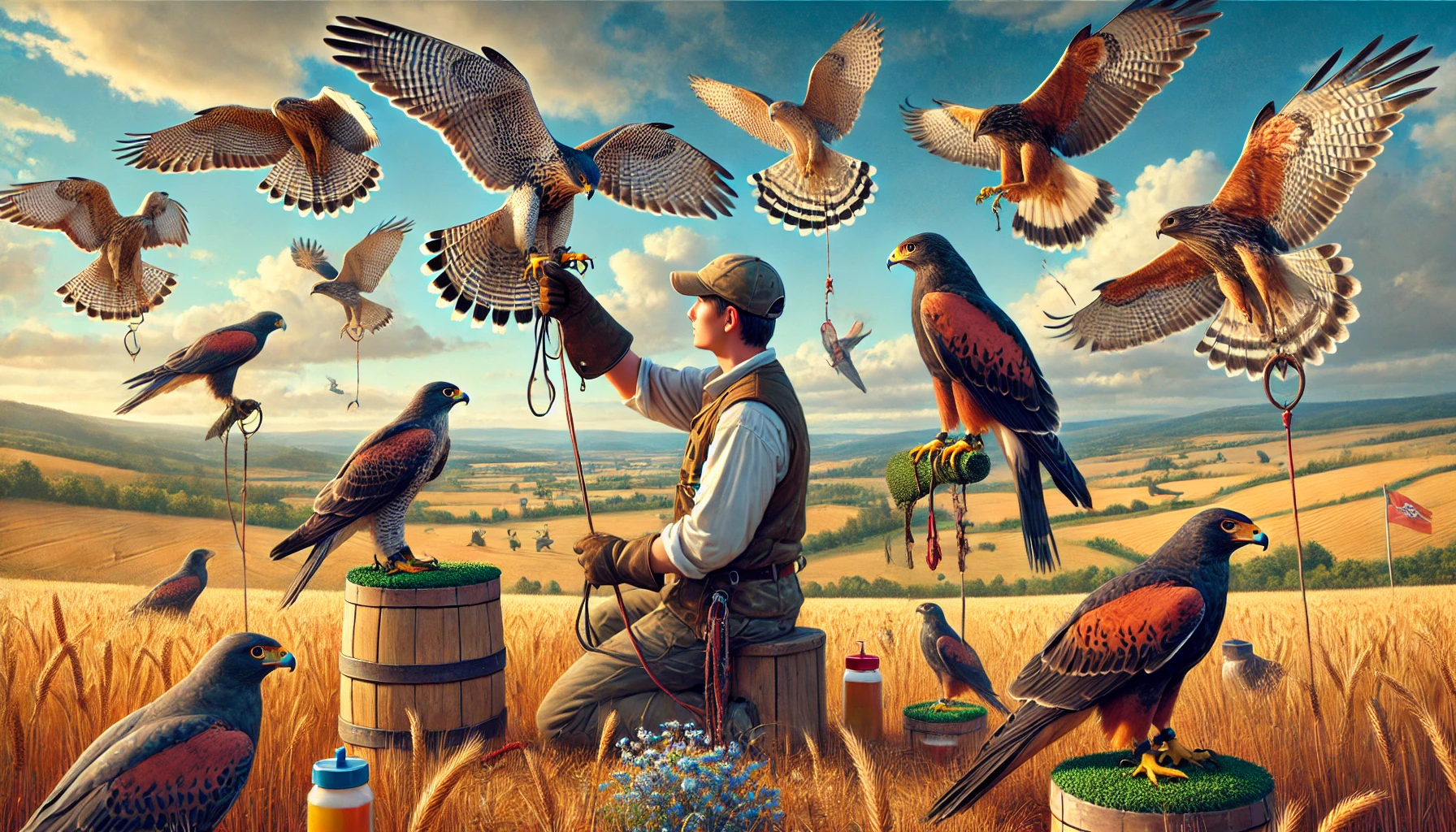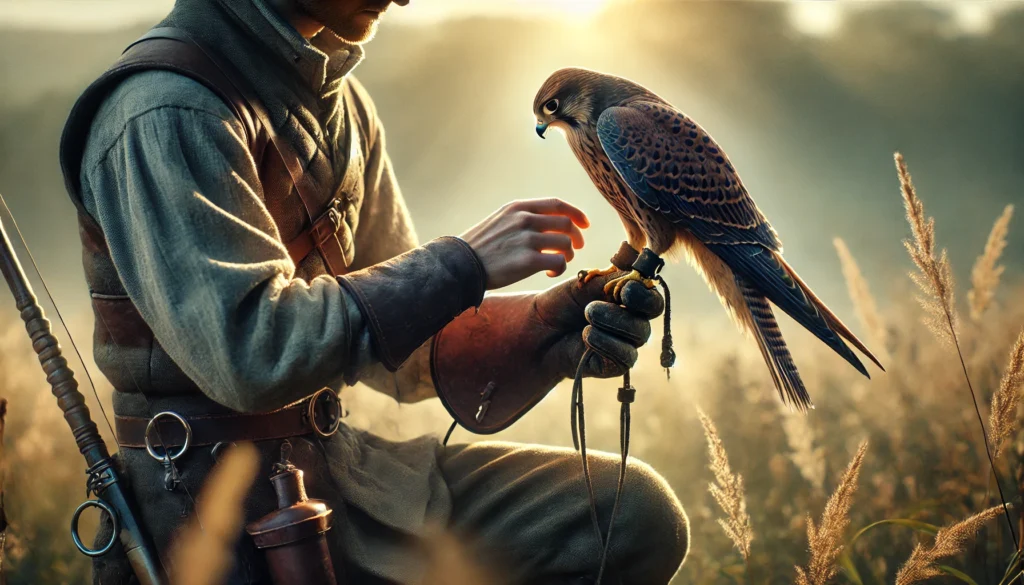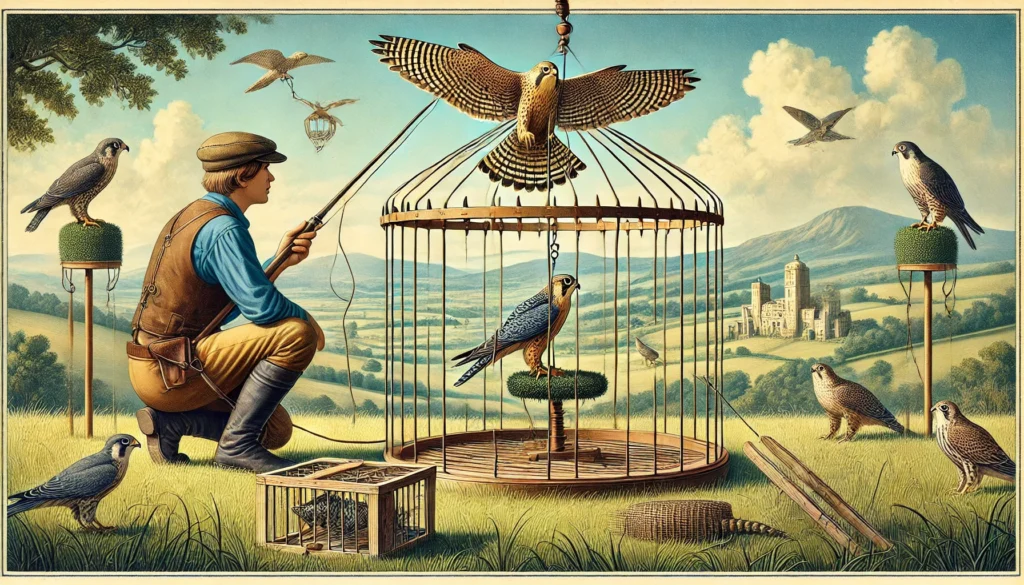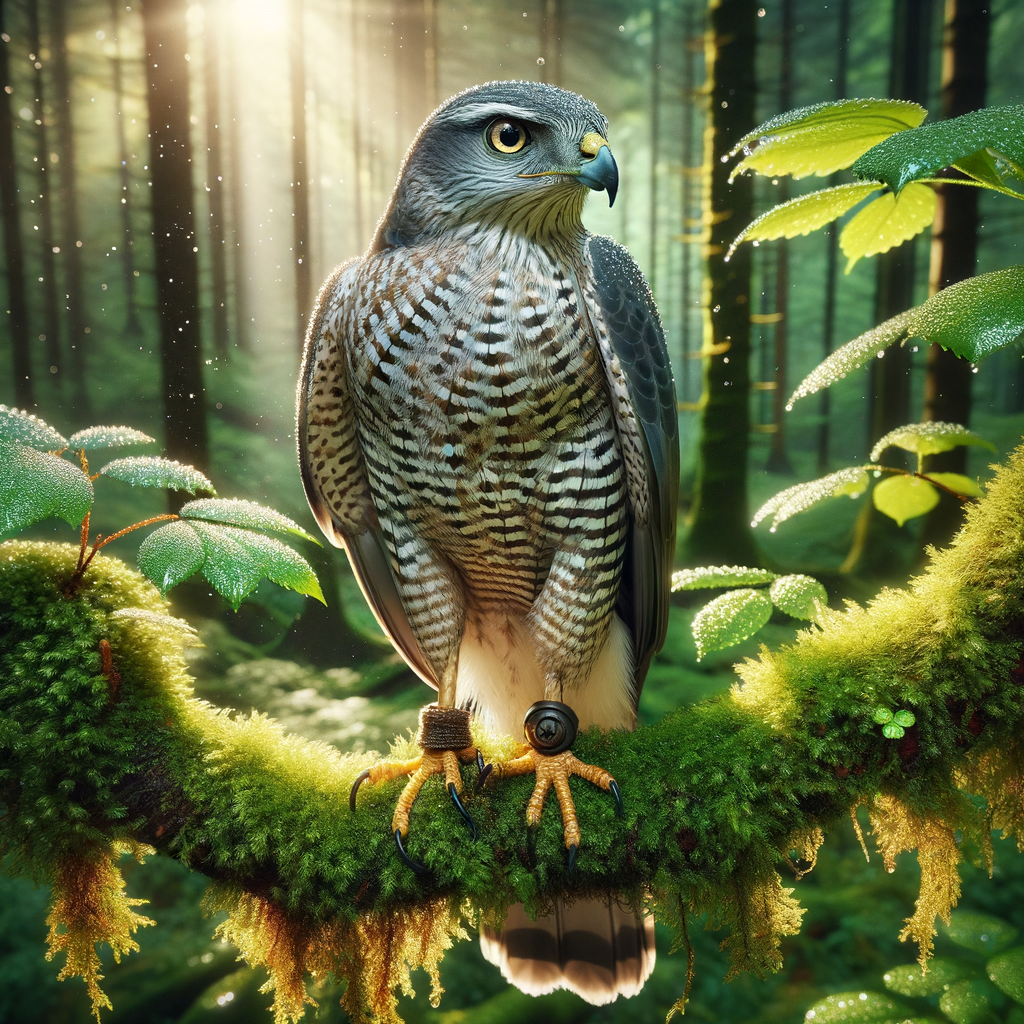Key Insights on Training Different Species for Falconry
- Understanding Unique Traits: Each falconry bird species has its own unique traits, which impact their training process.
- Patience is Crucial: Training requires a lot of patience and a commitment of time.
- Equipment Matters: Using the right equipment for each species is essential for successful training.
- Building Trust: Building a strong bond of trust between the bird and the falconer is fundamental.
- Proper Diet: Tailoring the diet to the specific needs of the species supports their health and performance.
- Training Techniques: Different species may respond better to specific training techniques.
- Behavioral Cues: Observing and understanding the behavior of the bird is key to effective training.
- Adaptability: Be adaptable, as what works for one bird may not work for another.
- Safety First: Always prioritize the safety of both the bird and the trainer during the training sessions.
- Consistency is Key: Consistent training schedules help in reinforcing desired behaviors.
- Experienced Guidance: Seeking guidance from experienced falconers can aid in overcoming training challenges.
Discover the Art of Training Different Falcon Species
Top o’ the mornin’ to you, fellow falconry enthusiasts! Imagine training falcons is a bit like weaving the intricate threads of an Irish tapestry. Each stitch, each thread, and each vibrant color come together to create a beautiful and unique masterpiece. Just like this tapestry, training different species of falcons requires a special touch, unique knowledge, and a whole lot of patience.
Keep reading, and you’ll uncover the secrets to mastering this ancient practice. Just as the Irish cherish their folklore, we treasure the wisdom passed down through generations of falconers. So grab a cozy seat, prepare to be enlightened, and let us lead you into the enchanting realm of falconry. Now, let’s dive into our journey of training diverse species of falcons, and discover how each one adds its own unique thread to our falconry tapestry.
Exploring the Diverse Approaches to Training Various Falcon Species
When it comes to falconry, the art and sport of training falcons, different species require different training methods. This practice, known as species-specific falcon training, highlights the need to adapt techniques based on the behaviors and needs of each falcon type. Understanding falcon training diversity is essential for anyone interested in becoming a skilled falconer.
First, let’s delve into the unique characteristics of some of the most popular falcon species used in falconry and how their traits influence training approaches.
Peregrine Falcons
Known for their incredible speed, Peregrine Falcons are one of the fastest animals on the planet. These birds are known for their high-speed stoops, which can reach over 200 mph. Training a Peregrine Falcon often involves focusing on exercises that enhance and utilize their natural speed and hunting skills. For more insights on Peregrine Falcons, click here.
Gyrfalcons
The largest of the falcon species, Gyrfalcons are powerful and endure cold climates. These traits make them perfect for hunting in extreme conditions. Training a Gyrfalcon requires patience and focus on endurance and strength-building exercises. Learn more about Gyrfalcons here.
Saker Falcons
These birds are well-known for their versatility and adaptability. Saker Falcons can thrive in various environments, making them a favorite among falconers who enjoy different terrains and hunting situations. Training Saker Falcons usually involves versatility training, exposing them to various terrains and hunting scenarios. Discover more about Saker Falcons.
American Kestrels
As the smallest falcon species in North America, American Kestrels are agile and highly maneuverable. Training these tiny falcons requires a focus on agility and precision. Their small size allows them to hunt efficiently in urban areas, making training for urban environments essential. To read more about American Kestrels, click here.
Basic and Advanced Training Techniques
Different falcons require tailored approaches, whether you’re a beginner or an advanced falconer. Basic training techniques for beginners might include manning (getting the bird used to humans) and starting with small, controlled flights. Advanced techniques can involve complex hunting strategies, advanced recall training, and the use of fitness training methods to keep the birds in peak condition. Explore more about basic techniques for training a falcon.
Training Techniques for Different Falcon Species
Falcon training diversity also reflects on the distinct training modules for each species:
- Longwing Techniques: Ideal for species like Peregrine Falcons, which excel in high-speed chases and long-distance flights. For more detailed information, check out longwing techniques.
- Shortwing Techniques: Suited for smaller falcons like American Kestrels, focusing on short, precise flights. Learn about shortwing techniques.
Essential Falconry Equipment
Using the right equipment is crucial for effective training. Each species may require different gear, from hoods and gloves to telemetry devices for tracking your falcon’s movements. Detailed information on essential falconry equipment is available on our website.
Health and Nutrition in Falcon Training
A healthy falcon is a well-performing falcon. Nutritional requirements can vary by species, so understanding these needs is part of effective species-specific falcon training. Learn more about basic health and nutrition to ensure your falcon’s well-being.
Legal Considerations in Falconry
Remember that falconry is regulated by laws. Knowing the legal aspects of falconry ensures that you’re compliant with local and international regulations, preserving the practice for future generations.
Each falcon species presents unique training opportunities and challenges. By appreciating the differences in their natural abilities and behaviors, you can develop a training program that brings out the best in your falcon. For in-depth exploration of specific falcon training techniques or the vast history of falconry, visit our comprehensive resource pages.
The Art of Training Different Falcon Species
Welcome to Learn Falconry, where we explore the exciting world of training falcon species! Falconry is not just about working with a single bird; it involves understanding the unique traits and needs of various species. Let’s dive deeper into the fascinating aspects of training different falcon species.
Peregrine Falcon Training
Peregrine Falcons are one of the most well-known and fastest birds of prey. Training them involves specific techniques to monitor and ensure their health and safety.
Banding and Monitoring
Banding is a crucial part of training and monitoring Peregrine Falcons. Each band has a unique numerical ID which helps in tracking individual birds. This method is essential for monitoring breeding pairs and identifying their sex.
| Band ID Example | Purpose |
|---|---|
| 001 | Track individual birds |
| 002 | Monitor breeding pairs |
| 003 | Identify sex |
Banding plays a significant role in tracking the recovery of Peregrine Falcons from near extinction. This species faced severe population decline due to DDT and other harmful factors. Thankfully, aggressive conservation efforts in the late 1970s and early 1990s led to their gradual recovery.
Falcon Cam and Monitoring
Using falcon cams and other monitoring tools provides valuable insights into the behavior of different falcon species. These cameras allow for the close observation of birds’ health, movements, and habits, promoting education and conservation.
| Monitoring Tool | Function |
|---|---|
| Falcon Cam | Observe health and behavior |
| GPS Trackers | Track movements and migratory patterns |
| Health Sensors | Monitor vital signs and overall well-being |
Falcon Training and Handling Techniques
Training falcons involves a variety of methods to ensure that the birds are well-prepared for flight and handling. These techniques vary depending on the species and the purpose of the training.
Training Techniques
- Flight Training: Teaching falcons to fly and hunt efficiently.
- Handling: Building trust between the bird and the trainer to ensure safe and smooth interactions.
- Behavioral Conditioning: Using positive reinforcement to shape desired behaviors.
These methods deepen the knowledge and skills of falconers, educators, rehabilitators, and zoo trainers, allowing them to work effectively with birds of prey.
Conservation Efforts
Conservation plays a big part in falcon training and species survival. Peregrine Falcons, for example, have made a remarkable recovery and were removed from the Endangered Species List in 1999. Continued conservation efforts ensure their long-term health and stability.
| Conservation Measure | Outcome |
|---|---|
| Banding and Monitoring | Track recovery and health of the species |
| Public Education | Promote awareness and support for wildlife |
| Habitat Protection | Ensure safe environments for falcons |
By monitoring local populations and studying their behavior, conservationists work diligently to protect these majestic birds and their habitats.
Inclusivity in Falcon Training
Falcon training is designed to be inclusive, providing opportunities for diverse groups of people with different skill levels and backgrounds. The training programs ensure that everyone feels comfortable and supported, making falconry accessible to all.
In summary, training different species of falcons is a complex and rewarding endeavor that involves a combination of monitoring, advanced techniques, and conservation efforts. Whether you are a beginner or an experienced falconer, there is always more to learn in the exciting world of falconry!
Final Thoughts on Training Different Falcon Species
Training different species of falcons takes dedication, patience, and specialized techniques. From the Peregrine Falcon to various other birds of prey, knowing their unique needs and behaviors is key to successful training. Falconers use banding to track their birds and gain insights into their recovery and health. Falcon cams offer a window into their world, helping both trainers and the public learn more about these magnificent creatures.
Continuous conservation efforts have played a huge role in the resurgence of species like the Peregrine Falcon. By monitoring, banding, and studying these birds, trainers and conservationists ensure that falcon populations not only survive but thrive. Whether you’re a beginner or an experienced falconer, the world of falconry holds endless opportunities for discovery and connection with these incredible birds of prey. So arm yourself with knowledge, practice with care, and become a part of this fascinating tradition!



